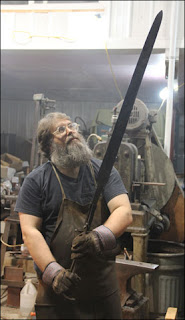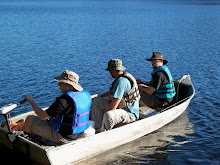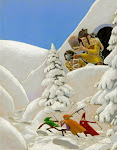When I used to game all the time, most of my GMing took place in Waterdeep and Undermountain in the forgotten Realms. In order to keep everything organized I used a huge zip up 3 ring binder like this one on Amazon.
I placed the sourcebook for Undermountain and for Waterdeep loosely in there, held in by the zipper. I also had a 3 ring binder with clean tear-out pages, for in game notes, keeping track of NPC hp and status during battles, and writing notes on rooms and traps, and ideas about Gates, etc...
Then I had color coded folders. One for water deep maps, for water deep sewers maps and other adventuring locales nearby Waterdeep. One for Undermountain maps, one for traps, one for new monsters, and one for treasures, miscellany, and Gonzo stuff that didn't fit into anything else.
I also tucked a tube of dice into the binder. It was the ONLY thing I needed to run all my games. At the time, I had the entire contents of the 2nd edition AD&D manuals in my head. I didn't need statistics for the normal monsters, and all the strange ones were in the binder. My players typically brought 1-2 players handbooks, and I had a policy at the time of making up all my magic items (not using many of the ones from the Dungeon Masters Guide. This was the strength of running one system over and over again, if I didn't remember the exact rule or HD of a monster, I made it up on the spot with a ruling and we kept playing. We had played the same game system for so long, I began to have an intuitive feel for what could be flexed and pushed without "breaking" it by ruining the players fun or making them too powerful. I'm sure many other long term GM's feel the same way about the system they spent the longest time with.
My players began to make jokes about it, calling it my Blue Binder of Death! We were playing about 5-6 days of the week, sometimes split into 2 or more groups with a total of 7-8 players rotating in and out. The players had set up an Archery store in the city, so whoever wasn't there for an adventure, was "tied up with business at the store". This was the high water mark of gaming for me, and it really was enabled by this system I concocted to allow me to keep ~12 levels of dungeons, a city of >100000 people, and much, much more organized
Multiple Defense penalty not automatically reseting?
-
I had a stray idea for a rough, gritty rule for cascading defenses.
Instead of resetting the penalty for multiple defenses on your turn, do not
reset it un...
22 hours ago





